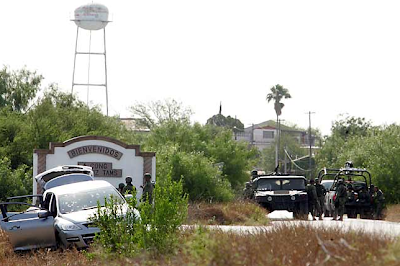By OLIVIA KATRANDJIAN
ABC NEWS
It has been two weeks since Robert Tamez, known to family and friends in South Texas as "Big Bob," disappeared after being attacked on his family's ranch in Tamaulipas, Mexico.
Tamez left Falfurrias, Texas in January and crossed the border into Miguel Aleman to be by his disabled father's bedside on the ranch near Ciudad Mier, a Mexican border town riddled with violence.
Now, his family said they are afraid he has been kidnapped and they hope it's not too late.
Agents from the San Antonio office of the FBI have contacted Mexican local and federal law enforcement authorities, which is standard procedure when an American goes missing in Mexico.
"Were looking into the matter," Erik Vasys, special agent for the FBI in San Antonio, told ABC News.
Two weeks ago, when the ranch was stormed by a group of men, Tamez's father was beaten but survived, his family said. The injured man was taken to Miguel Aleman and made it safely across the border to Roma, Texas. He is now in Texas with his family, waiting for news from his son, his family said.
"I just don't know if my son is alive or if he's dead. My heart keeps telling me he's alive," Grace Tamez, Robert Tamez's mother, told ABC News affiliate KRGV-TV in Rio Grande. "I want to think of Bobby the way he was, laughing, joking, giving me his bear hugs, and I can't."
"His whole thing was to take care of my dad. That was his main concern. That is his main concern," said Belen Ramos, Tamez's sister.
With widespread drug-related violence in Mexico only growing, this disappearance is just one of many recent incidents to occur in the U.S.-Mexico border regions.
Last fall, when Americans Tiffany and David Hartley went jet skiing on Falcon Lake at the Texas-Mexico border, they were attacked by Mexican pirates and David Hartley was shot and killed. Only days later, the lead investigator on the case, Rolando Flores, was decapitated.
In January 2011, a U.S. missionary working in Mexico sped against traffic to the Mexican border as his wife sat in the front passenger's seat, bleeding from a head wound after being shot by gunmen in a pickup truck. Nancy David, 59, died in a South Texas hospital 90 minutes after they got there.
The Mexican government has been waging a war against the Mexican drug cartels and the growing drug-related violence.







































.webp)


